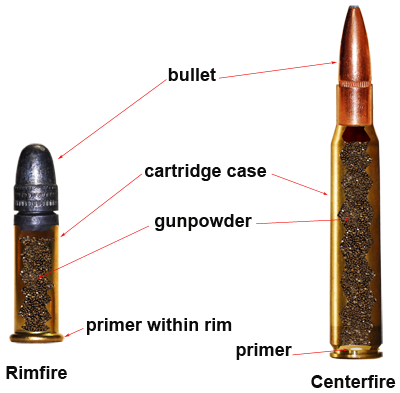Ammunition Pro Llc Things To Know Before You Get This
Table of ContentsExcitement About Ammunition Pro LlcAmmunition Pro Llc Fundamentals ExplainedMore About Ammunition Pro LlcRumored Buzz on Ammunition Pro Llc4 Easy Facts About Ammunition Pro Llc Explained
The fundamental components of ammunition are the exact same for rifle, handgun, and shotgun ammo. Understanding how ammo functions is an essential facet in being a liable weapon proprietor. Today we're taking a look at the what the standard parts of ammo are and exactly how they collaborate to fire a round. The standard parts of ammo shown on a 9mm. Ammo Retailer round.The bullet is seated in the open end of the instance. When you terminate a bullet out of a semi-auto gun, the weapon's extractor lifts the instance from the firing chamber and it flies out of the gun.
A weapon's firing pin strikes a cartridge's primer. The primer is a metal mug that holds an eruptive chemical substance. When the firing pin strikes the primer cap, it squashes the priming substance against the anvil. This develops a small surge in the event that stirs up the propellant. The primer is situated in the edge of the instance of a rimfire cartridge.
Ammunition Pro Llc Can Be Fun For Everyone
Gunpowder next to the instance that commonly contains it. It is usually a mix of saltpeter, charcoal, and sulfur.

We call the projectiles for shotshells, which we discharge through shotguns, slugs and shot. A slug is one strong item, usually constructed out of lead. Shot is a group of pellets constructed of lead, steel, bismuth, or tungsten alloy. Shot pellets can can be found in different sizes and quantities. Now that you have a standard understanding of the standard parts of ammunition, you can feel a little extra confident in how your gun and ammo function!.
Not known Details About Ammunition Pro Llc
Maintain up with Special Offers, Breakthrough Notification of Sales, and Store Occasions
Enjoyable reality: Grains are used to describe the mass of a bullet because all the means back in the very early days of weapons, it was an apothecary's unit of measurement, and a common denominator was needed to determine just how much cause make use of to make cast lead bullets (Ammo Deals). 'Grains' as a system of procedure for weight goes all the means back to old times, and stands for the weight of a grain of wheat

(https://replit.com/@ammunitionproll)For reference, the weight of a paper clip has to do with 16 gr. We know that grains are a procedure of mass, and a lot more = much heavier, and heavy is good? Yes, heavy is excellent, but mass of the projectile isn't the only point you require to take into consideration when selecting a round for your gun.
The 3-Minute Rule for Ammunition Pro Llc
This spin is developed by grooves reduced or hammered into the interior of the barrel, which are referred to as 'rifling'. Enjoyable fact, this is the beginning of the term "Rifle" ex lover. A rifled firearm vs. smoothbore musket. The impact this spin has on projectiles is a supporting one the bullet turning keeps the nose directed right, in the very same method that a perfectly spiraled football toss is going to be far more secure and accurate in trip than an unsightly duck, end over end throw.
Just how does this associate with grain weight? Imagine you get on one of those playground carousels, the ones with bars you hold on to while it spins. Or a circus experience where you're strapped to a board, facing inwards, which revolves really fast. When it's rotating slowly, you do not really feel much, and it's easy to hold on.
Or when it comes to the carnival ride, you begin to feel larger. The even more mass you have (weight), the more you will certainly feel this effect. The exact same impact takes place with bullets. The much heavier the projectile, the even more result a much faster spin will certainly have on it. This is why you tend to see slower spin rates for larger, slower projectiles, and quicker twist prices for lighter, greater speed projectiles.
Ammunition Pro Llc Fundamentals Explained
There's one more element that we have to take into consideration when choosing a grain weight for our ammo. As hinted at above, bullet speed, or the speed of the projectile, is a major variable when determining the most effective grain weight projectile to use. Rate is impacted by a couple of major aspects, consisting of the kind and amount of propellant (gunpowder), barrel length, and bullet weight.

One of the most common grain weight rounds for 9x19mm cartridges are 115gr and 124gr. These are usually lead core, fully jacketed (FMJ) rounds. Both of these grain weight cartridges will certainly execute well in manufacturing facility 9mm handguns, to regular pistol distances (approximately 50 yards). 115 grain rounds are the most usual (and as a result least costly).